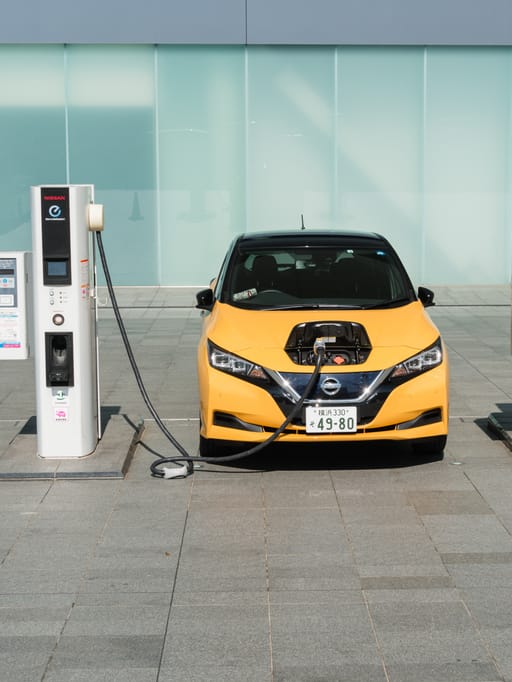Plug-in Hybrid vs. Battery Electric Vehicles: Choosing the Right EV for You

The electric vehicle (EV) revolution is gaining momentum, with a growing number of car manufacturers offering exciting plug-in hybrid (PHEV) and battery electric vehicle (BEV) options. Both offer significant environmental benefits compared to traditional gasoline-powered cars. But choosing the right EV for your needs can be a challenge. This article will explore the key differences between PHEVs and BEVs, along with some of the most popular models available today, to help you make an informed decision.
Understanding PHEVs and BEVs
Plug-in Hybrid Electric Vehicles (PHEVs):
- PHEVs combine an electric motor with a gasoline engine.
- They have a battery pack that can be plugged in to recharge, allowing for electric-only driving for a limited range (typically 20-50 miles).
- Once the battery is depleted, the gasoline engine kicks in, operating like a hybrid electric vehicle (HEV).
- PHEVs offer peace of mind to drivers who may experience "range anxiety" – the fear of running out of battery power on long trips.
Battery Electric Vehicles (BEVs):
- BEVs rely solely on electricity for propulsion.
- They have larger battery packs compared to PHEVs, offering a longer electric driving range (often exceeding 250 miles).
- BEVs require charging at home or at public charging stations.
- While charging times are improving, they are still significantly longer than filling up a gas tank.
Choosing the Right EV for You: A Feature-by-Feature Breakdown
Driving Range:
- PHEVs: Ideal for everyday commuting within the electric range. Gas engine provides backup for longer trips.
- BEVs: Well-suited for drivers with predictable driving patterns and access to charging infrastructure. May require trip planning for longer distances.
Charging:
- PHEVs: Offer more flexibility with the ability to refuel with gas, but still require regular charging to maximize efficiency.
- BEVs: Reliant on access to charging stations for long-distance travel. Home charging is highly recommended for daily use.
Fuel Efficiency and Environmental Impact:
- PHEVs: Operate in electric mode for shorter trips, reducing emissions. However, they still produce emissions when using the gasoline engine.
- BEVs: Produce zero tailpipe emissions, making them the cleanest option.
Maintenance:
- PHEVs: May require more maintenance compared to BEVs due to the presence of a gasoline engine and complex drivetrain.
- BEVs: Generally require less maintenance due to fewer moving parts and fluids.
Cost:
- PHEVs: Typically more expensive than gasoline-powered cars but less expensive than BEVs upfront.
- BEVs: Generally have a higher initial purchase price, but offer significant fuel cost savings in the long run. Government incentives can also offset the initial cost.
Examples of Popular PHEVs and BEVs:
Plug-in Hybrids (PHEVs):
- Toyota Prius Prime: A well-established PHEV with a reliable reputation and an electric range of around 25 miles.

- Ford Escape Plug-in Hybrid: A versatile option offering an electric range of 37 miles and spacious cargo capacity.

- Chrysler Pacifica Hybrid: A family-friendly PHEV minivan with a 32-mile electric range and comfortable seating for seven.

Battery Electric Vehicles (BEVs):
- Tesla Model 3: A luxury sedan with an impressive range exceeding 270 miles and a focus on performance.

- Chevrolet Bolt EV: A practical and affordable hatchback with a driving range of around 259 miles.

- Nissan Leaf: A pioneer in the BEV market, offering a range of over 220 miles and a comfortable ride.

Additional Considerations:
- Charging Infrastructure: Availability of charging stations at home, work, and along your regular routes is crucial for BEVs.
- Government Incentives: Federal and state tax credits can significantly reduce the upfront cost of buying an EV.
- Lifestyle and Driving Habits: Consider your daily commute, average trip length, and access to charging to determine if a PHEV or BEV is a better fit.
The Bottom Line
There's no one-size-fits-all answer when choosing between a PHEV and a BEV. The best option for you depends on your individual needs, driving habits, and budget. PHEVs provide a bridge between gasoline-powered vehicles and BEVs, offering peace of mind with the backup of a gasoline engine. BEVs are a cleaner and more efficient option, ideal for drivers with access to charging infrastructure and predictable driving patterns.
By carefully considering the factors discussed above, you can make an informed decision and join the growing wave of EV ownership. Here are some additional tips to help you on your journey:
Test Drive Both PHEVs and BEVs: Experience the driving dynamics and features of each type of vehicle to see which one feels more comfortable and enjoyable for you.
Research Charging Options: Explore home charging station installation costs and public charging network availability in your area.
Factor in Total Ownership Costs: Consider not just the purchase price, but also potential fuel savings, tax credits, and maintenance costs over the lifetime of the vehicle.
Stay Updated on EV Technology: The EV market is rapidly evolving, with new models and advancements in battery technology emerging all the time.
The transition to electric vehicles offers a path towards a cleaner and more sustainable future. By choosing the right EV for your needs, you can contribute to environmental protection and enjoy the benefits of electric driving. So, buckle up and get ready to experience the exciting world of EVs!
